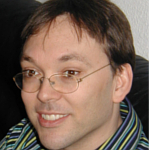Computational Neuroscience Meeting 2017
Posted on 11 August 2017
Computational Neuroscience Meeting 2017
 By Stephen Eglen, University of Cambridge.
By Stephen Eglen, University of Cambridge.
The annual Computational Neuroscience meeting was held this July in Antwerp, Belgium. This is a well-established meeting for researchers to discuss matters around computational modelling and analysis of neuronal systems. Although computational simulation and analysis is at the heart of this field, historically there has been little evidence of sharing of code. I was pleasantly surprised, however, to discover at the meeting that many leading labs now embrace open science. Below I outline my key observations based on observing and presenting at two workshops.
Workshop 1: Recent methods and analyses for neuronal population recordings
Recent technological developments mean that it is now possible to record the spiking activity of many hundreds or thousands of neurons simultaneously. This workshop described some of these recent techniques and the challenges for data analysis. Two themes of general interest emerged in my view from the first day:
-
People are now sharing their computational methods; most speakers at the workshop already made their code freely available, usually on GitHub (examples: 1, 2, 3, 4, 5, 6). This seems to be a recent trend in the field, compared to other areas of computational biology for which this is common practice.
-
Groups are now comparing their methods with each other by using competitions. Some training data is provided for the competition, and then submissions are independently evaluated on test data. One such recent competition is Spike finder for inferring action potentials from calcium imaging. Such competitions are a great way to evaluate methods and long may they continue.
Electrophysiological tools continue to be developed at a rapid pace, and so we still need more computational methods for processing and analysing the data generated from these tools. In my talk towards the end of the first day, I encouraged people to adopt open science principles in the ongoing development of these tools.
Workshop 2: Emerging models in scientific communication and discussion
On the second day of workshops I switched to the workshop on new developments in scholarly publishing. Many neuroscientists still feel trapped by the current publishing system whereby publishing in the "top-tier" journals is seen as a key requirement for future success. The aim of this one day workshop was to consider ways in which we can develop alternative systems. Most of the slides are available on the workshop page and are appropriate for all scientific disciplines. A few key highlights for me were the following talks (with apologies to Trainspotting fans):
-
Choose open science: how to be an open scientist.
-
Choose preprints: everything you wanted to know about preprints but were afraid to ask.
-
Choose post-publication peer review: everyone can now be a reviewer, not just the two/three people chosen by the editor.
-
Choose Rescience: publish journal articles on GitHub with all the code/data to regenerate a previous finding.
Two talks were also given by publishing editors for F1000 Research and eLife. Both groups are bringing innovations to the world of publishing, including interactive figures and executable articles. Again, these innovations apply across the sciences, and I encourage people to evaluate and support these approaches: scientific research is too valuable to be locked up in a PDF behind a paywall!

